|
| American Civil War |
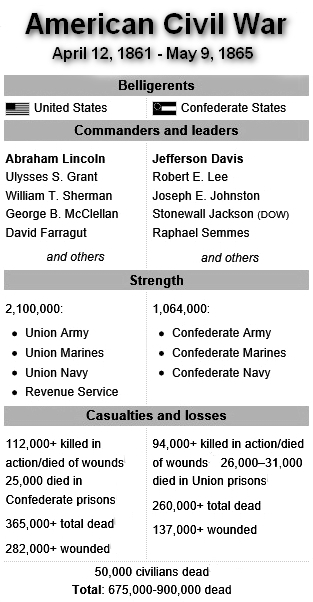
|
| American Civil War |
Overview
Date: April 12, 1861—May 9, 1865
Location: Principally in the Southern United States
Result(s): Union victory;
Secession defeated; Restoration of the Union; Reconstruction; Slavery abolished
Combatants: United States of
America (Union); Confederate States of America (Confederacy)
Theaters of the American Civil War: Union blockade –
Eastern – Western – Lower Seaboard – Trans-Mississippi – Pacific Coast
| American Civil War |
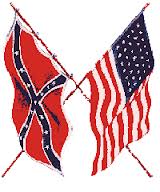
|
| US Civil War Flags |
History
American Civil War (1861–1865) was a major war between the United
States ("Union") and eleven Southern states ("Confederacy"), which declared that they had a right to secession and formed the Confederate States of America, led by President Jefferson Davis. The Union included free states and Border States and was led by President Abraham Lincoln and the Republican Party. Although the Border States were under
Union control, they supplied the South with tens-of-thousands of troops.
| The Civil War left many Southern cities in ruins. |
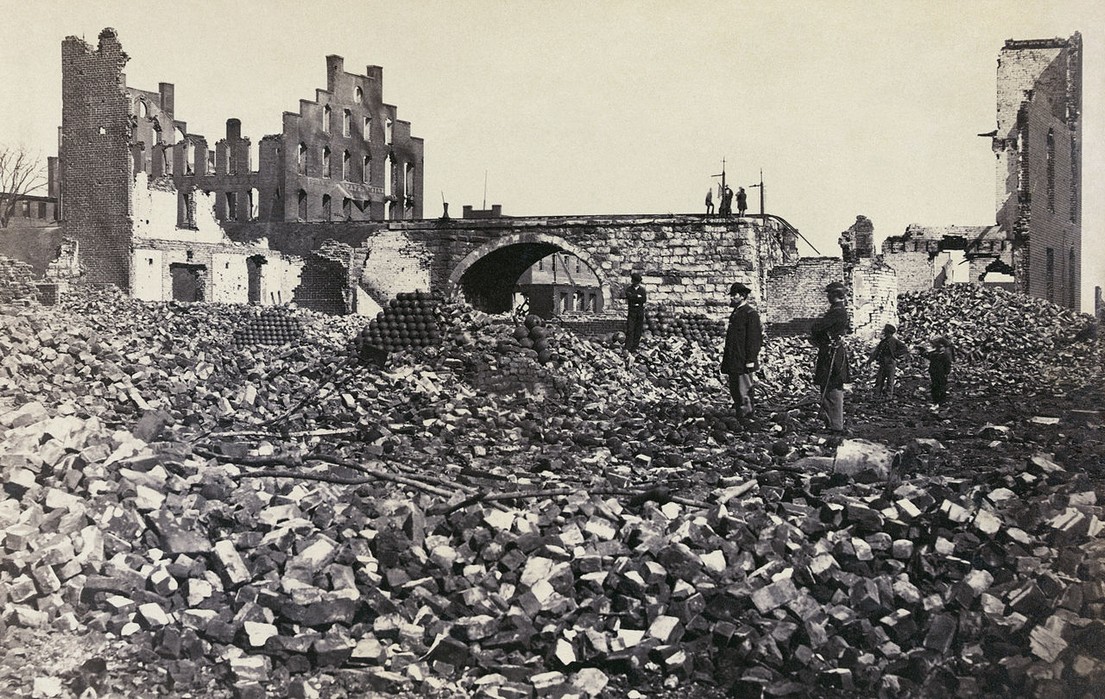
|
| Richmond from Ruins, Rubble, Reconstruction, to Rebuilding. ca. April 1865. |
| American Civil War |
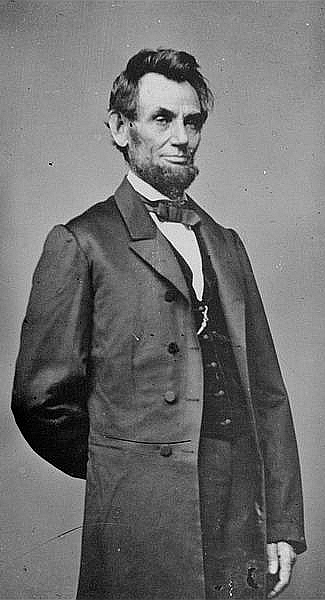
|
| President Abraham Lincoln |
| President Jefferson Davis |
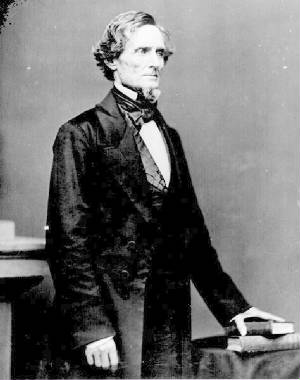
|
| American Civil War |
Fighting commenced on April 12, 1861, when Confederate forces attacked a
United States (Federal) military installation at Fort Sumter in South Carolina, the first state to secede. South Carolina, however, claimed that Fort Sumter was legally within its (territorial) waters.
During the American Civil War, the North generally named a battle after
the closest river, stream or creek, and the South tended to name battles after towns or railroad junctions. Hence the Confederate
name Manassas after Manassas Junction, and the Union name Bull Run for the stream Bull Run.
During the first year of the Civil War, the Union assumed control
of the Border States and established a naval blockade as both sides raised large armies. In 1862, major bloody battles, such as Shiloh and Antietam, were fought causing massive casualties unprecedented in U.S. military history. In September 1862, Lincoln's
Emancipation Proclamation made the freeing of slaves in the South a war goal, despite opposition from Northern Copperheads who
tolerated secession and slavery.
Emancipation reduced the likelihood
of intervention from Britain and France on behalf of the Confederacy. In addition, the goal also allowed the Union to recruit
African Americans for reinforcements, a resource that the Confederacy did not exploit until
it was too late. The Border States and War Democrats initially opposed emancipation, but gradually accepted it as part of
total war needed to save the Union.
| American Civil War Map |
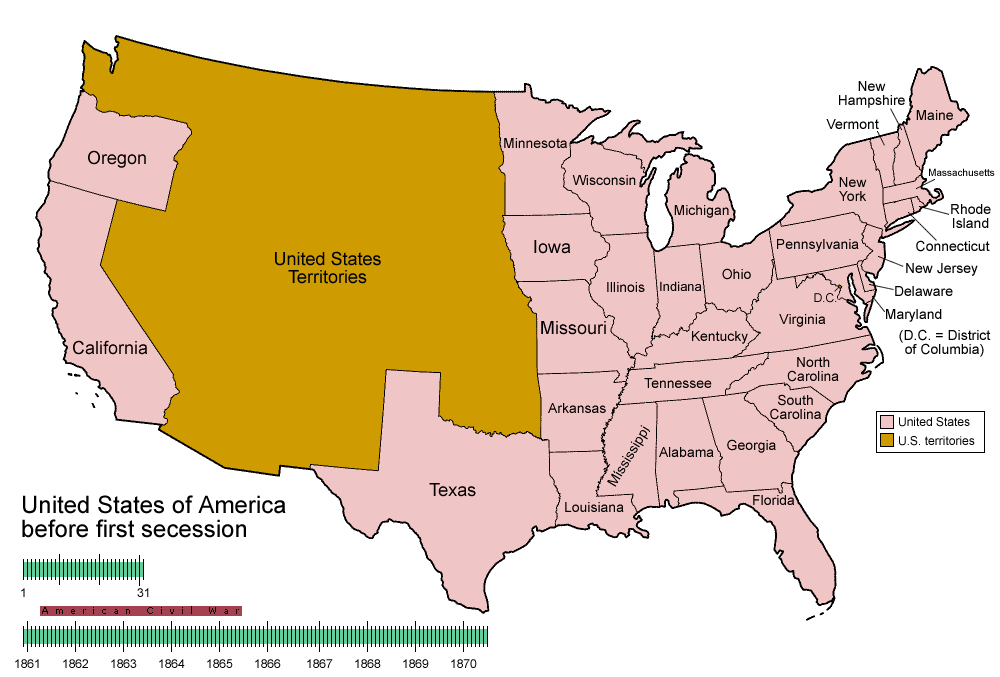
|
| Map of the Union, Confederate, and Border States |
| American Civil War |

|
| American Civil War Facts |
| General Robert E. Lee |
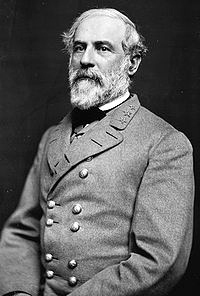
|
| American Civil War |
By 1864, long-term Union advantages in geography, manpower, industry, finance,
political organization and transportation were overwhelming the Confederacy. Grant fought a number of bloody battles with
Lee in Virginia during the summer of 1864. Lee's defensive tactics resulted in extremely high casualties for Grant's army,
but Lee lost strategically overall as he could not replace his casualties and was forced to retreat into trenches around the
Confederacy's capital, Richmond, Virginia. Meanwhile, General William Sherman, the leader of the Union Military Division of
the Mississippi, captured Atlanta, Georgia, during his March to the Sea. Sherman also destroyed a hundred-mile-wide
swath of Georgia. In 1865 the Confederacy collapsed after Lee surrendered to Grant at Appomattox Court House. See also Order of Surrendering Confederate Forces and Last Battle and Final Surrender of the Civil
War.
| American Civil War History Homepage |
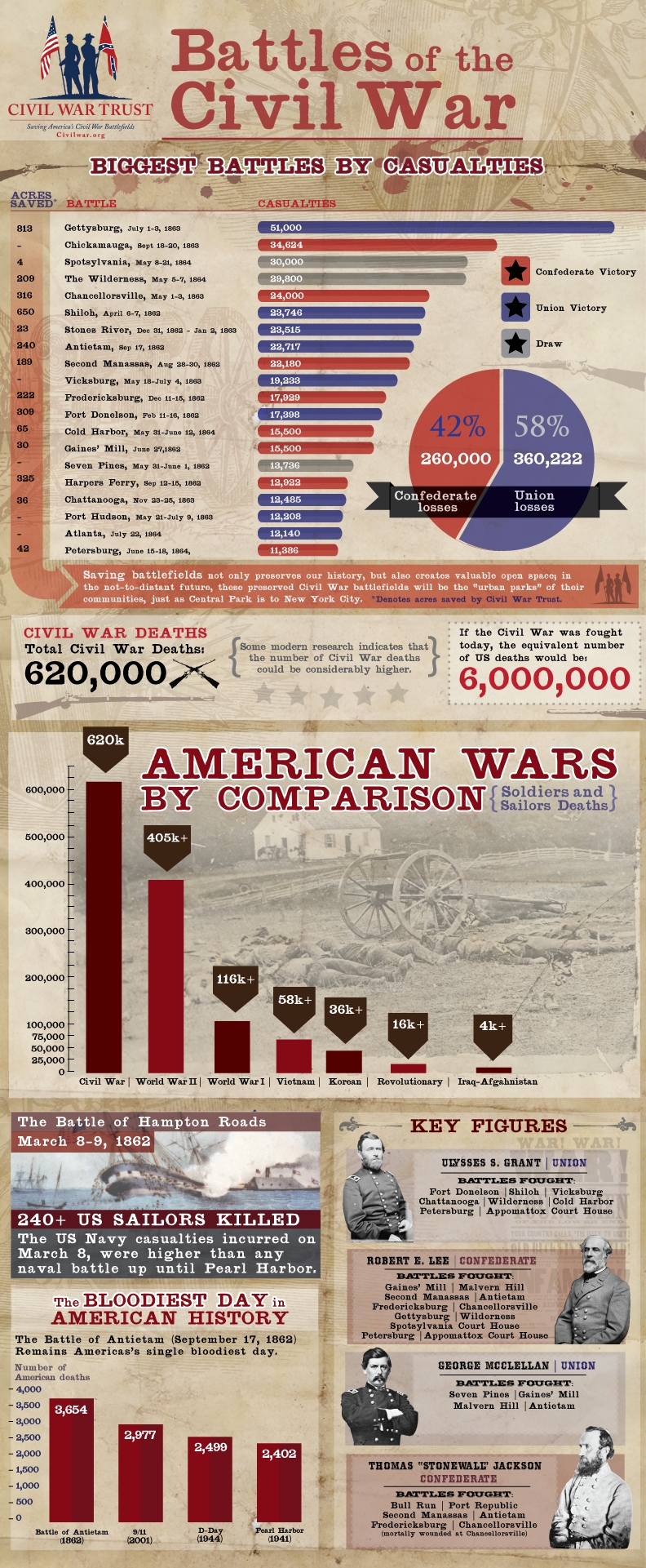
|
| American Civil War Facts |
| General U. S. Grant |

|
| American Civil War |
During the American Civil War, all slaves in the Confederacy were freed by the
Emancipation Proclamation, which stipulated that slaves in Confederate-held areas, but not in Border States or
in Washington, D.C., were free. Slaves in the Border States and Union-controlled areas in the South were freed by state action
or by the Thirteenth Amendment, although slavery effectively ended in the United States in the spring of 1865. The full restoration
of the Union was the work of a highly contentious postwar and aftermath era known as Reconstruction.
More than 10,500 battles and skirmishes were fought during the Civil War, with 384
engagements (3.7 percent) identified as the principal battles and classified according to their historical significance. Napoleonic Tactics and diseases, consequently, were the contributing factors for the high casualties during the conflict.
The American Civil War produced an estimated 1,030,000 casualties (3% of
the U.S. population, which today would equate to nearly 9,000,000 souls), including approximately 620,000 deaths (two-thirds by disease). Let's take a moment and think about it
on today's terms. Placing it into perspective, 3% of the U.S. population equates to the combined population of the present-day states
of New Hampshire, Hawaii, Rhode Island, Montana, Delaware, South Dakota, Alaska, North Dakota, Vermont and Wyoming. See also
American Civil War History.
The Civil War accounted for more casualties than all previous U.S. wars
combined. Presently, the causes of the war, the reasons for its outcome, and even the name of the war itself are subjects
of lingering controversy. The main result of the war was the restoration of the Union. Also, approximately 4 million slaves
were freed in 1865. Based on 1860 United States census figures, 8% of all white males aged 13 to 43 died in the war, including
6% in the North and an extraordinary 18% in the South. See also: American Civil War Battles,
Casualties, & Statistics and Organization of Union and Confederate Armies.
| Lee and Grant Surrender Meeting at Appomattox |
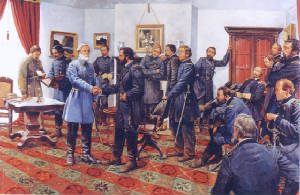
|
| American Civil War |
| American Civil War Map |

|
| American Civil War and present-day Map |
Try our search engine, enter, for example, General Lee, Civil War Aftermath, Causes of
the Civil War, Battle of Gettysburg, etc.
Recommended Viewing: Ken Burns Award Winning Series, "The Civil War"
Editorial Review: The most successful public-television miniseries in American history, the 11-hour "Civil War" didn't just captivate a nation, reteaching to us our history
in narrative terms; it actually also invented a new film language taken from its creator. This documentary has
definitely raised the standard...
Recommended Reading: The History Buff's Guide to the Civil War (400 pages).
Description: Exploring the Civil War can be fascinating, but with
so many battles, leaders, issues, and more than 50,000 books on these subjects, the task can also be overwhelming. Was Gettysburg
the most important battle? Were Abraham Lincoln and Jefferson Davis so different from each other? How accurate is re-enacting?
Who were the worst commanding generals? Thomas R. Flagel uses annotated lists organized under more than thirty headings to
see through the powder smoke and straighten Sherman’s neckties, ranking and clarifying the best, the worst, the largest,
and the most lethal aspects of the conflict. Major sections are fashioned around the following topics:
• Antebellum: Investigates the critical years before the war, in particular the growing crises, extremists,
and slavery.
• Politics: Contrasts the respective presidents and constitutions
of the Union and Confederacy, the most prominent politicians, and the most volatile issues of the times.
• Military Life: Offers insights into the world of the common soldiers,
how they fought, what they ate, how they were organized, what they saw, how they lived, and how they died.
• The Home Front: Looks at the fastest growing field in Civil War
research, including immigration, societal changes, hardships and shortages, dissent, and violence far from the firing lines.
• In Retrospect: Ranks the heroes and heroines, greatest victories
and failures, firsts and worsts.
• Pursuing the War: Summarizes Civil War study today, including films,
battlefield sites, books, genealogy, re-enactments, restoration, preservation, and other ventures.
From the antebellum years to Appomattox and beyond, The History Buff’s
Guide to the Civil War is a quick and compelling guide to one of the most complex and critical eras in American history.
Recommended
Reading: Ordeal By Fire: The Civil War and Reconstruction
(816 pages).
Description: Pulitzer Prize
winning author, James McPherson, Battle Cry of Freedom: The Civil War Era and For Cause and Comrades: Why Men Fought in the Civil War , describes the causes and origins of the Civil War; motivations and experiences of common
soldiers and the role of women; social, economic, political and ideological conflicts; as well as a comprehensive study of
the Reconstruction Era and its consequences. Professor McPherson also includes many visual aids such as detailed maps and
comprehensive charts. “A must have for the Civil War buff!” , describes the causes and origins of the Civil War; motivations and experiences of common
soldiers and the role of women; social, economic, political and ideological conflicts; as well as a comprehensive study of
the Reconstruction Era and its consequences. Professor McPherson also includes many visual aids such as detailed maps and
comprehensive charts. “A must have for the Civil War buff!”
Editor's
Choice: The Civil War Battlefield Guide: The Definitive Guide, Completely Revised, with New Maps and More Than 300 Additional
Battles (Second Edition) (Hardcover). Description: This new edition of the definitive guide to Civil War battlefields
is really a completely new book. While the first edition covered 60 major battlefields, from Fort Sumter
to Appomattox, the second covers all of the 384 designated
as the "principal battlefields" in the American Civil War Sites Advisory Commission Report. As in the first edition,
the essays are authoritative and concise, written by such leading Civil War historians as James M. McPherson, Stephen
W. Sears, Edwin C. Bearss, James I. Robinson, Jr., and Gary W. Gallager. The second edition also features 83 new four-color
maps covering the most important battles. The Civil War Battlefield Guide is an essential reference for anyone interested
in the Civil War. "Reading this book is like being at the bloodiest battles of the war..."
|

